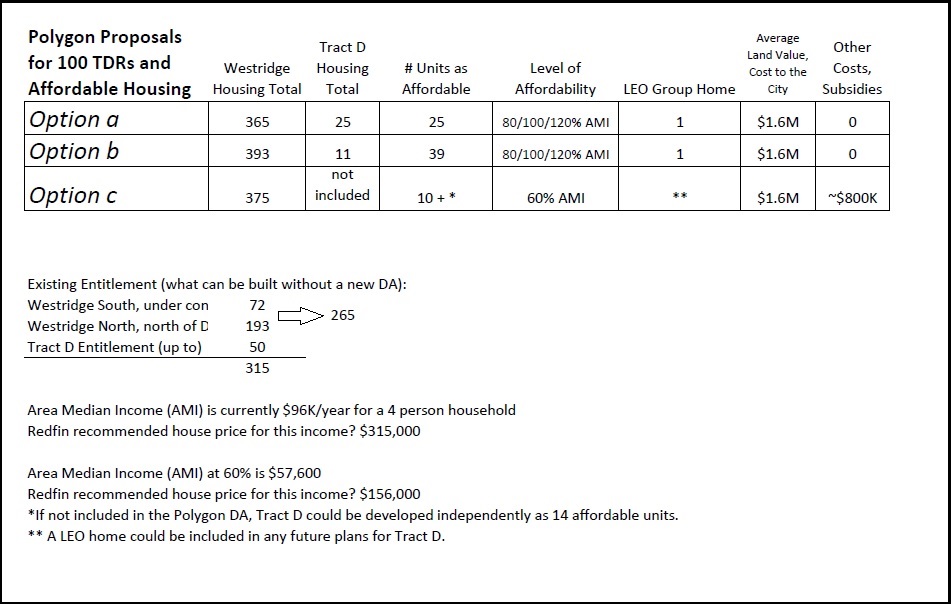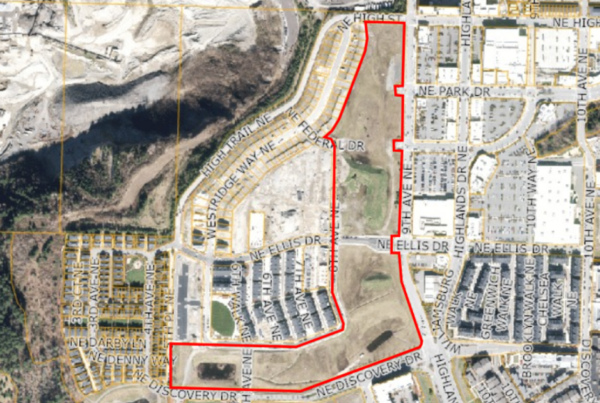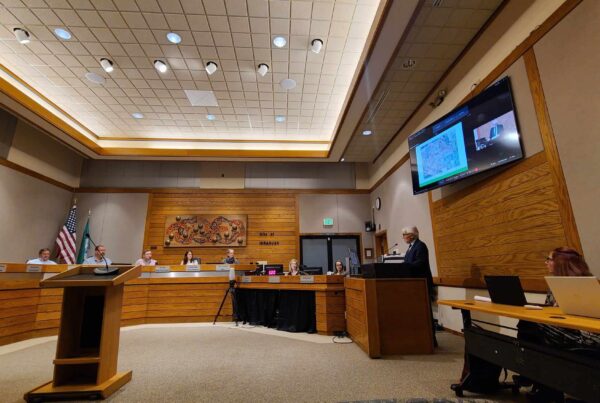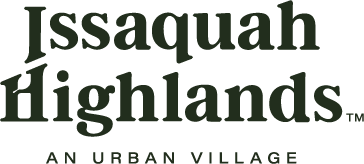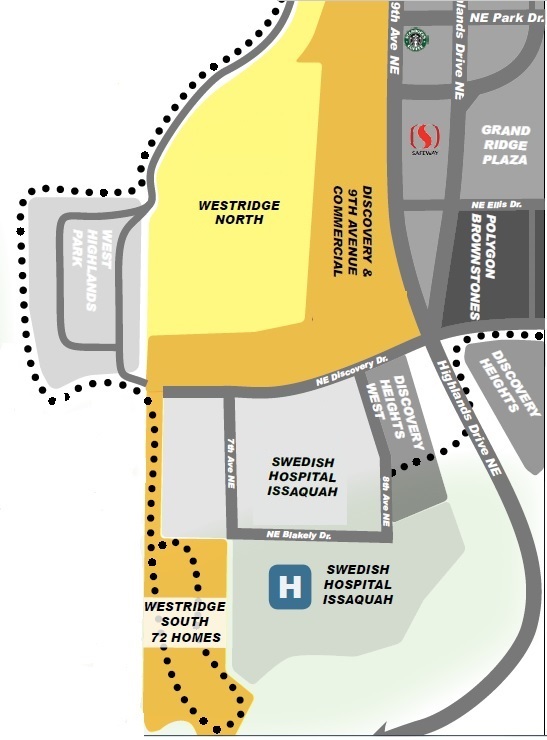
By Nina Milligan, Issaquah Highlands Council, Communication Manager
Negotiations continue as the Land and Shore Committee of the Issaquah City Council voted 2-1 on Thursday, June 1st to recommend full council approval of Polygon Homes’ proposal called “Option B” for Westridge and Tract D. This “option” is a variation of their original proposal in 2016 to increase the housing count in Westridge, Issaquah Highlands from 265 homes to 365 by transferring in 100 housing development rights. These development rights were purchased from Park Point, land the City wished to keep as open space. Currently, there are three options on the table:
2016 Original Proposal: Add 100 Transfer Development Rights (TDRs) to Issaquah Highlands in Westridge and develop Tract D (located at College and Falls Drive) as 25 units of “affordable housing” and one group home for LEO (Life Enrichment Options). Buyers of the affordable housing would qualify if making 80, 100 and 120% of Area Median Income or AMI ($72K to $108K per year for a family of four).
Option B: Add 100 homes to Westridge plus 39 more as affordable housing whose “entitlement” moves from Tract D to Westridge. The 39 affordable units would be stacked flats built near 7th Ave NE, next to West Highlands Park affordable units. Under this option, the City would give Tract D to Polygon Homes, who would build and sell 11 market rate homes there.
Option C (introduced last minute, at June 1st meeting): Instead of developing Tract D, Polygon would develop the 100 TDR units plus 10 more on site, as affordable. These homes would be interspersed through the Westridge neighborhood and be provided at 60% AMI. This proposal avoids using Tract D and its affordable housing entitlement, leaving it in City ownership.
These three options come before the full council on Monday, June 19th for what is expected to be an up or down vote.
Over the past several months, the City Council and Polygon Homes have negotiated over whether to allow Polygon to bring 100 TDRs they own into Issaquah Highlands, and if so, how best to do it. To gain acceptance, Polygon Homes offered as a public benefit to provide affordable housing, a much sought-after element in the City’s housing.
In February, the Council’s Land and Shore Committee voted unanimously to disapprove Polygon’s original proposal. Members cited several concerns: traffic and infrastructure, growth outside the Urban Core of Central Issaquah, distance of affordable units from the Park and Ride, the value of City-owned land given to the developer, and compatibility of that development with surrounding neighborhoods.
Since then, the City and Polygon Homes have been negotiating, providing the Council’s Land and Shore Committee with more Information and additional options to consider:
Traffic and Infrastructure – Addressed in the City’s State Environmental Policy Act (SEPA) Checklist which requires the developer to remedy or mitigate any issues.
Growth Outside Urban Core – Seems to be no longer part of the discussion.
Distance from Park & Ride – Original proposal and Option B measure the same distance to P & R for the affordable units.
Value of Giving Tract D, City-Owned Land to the Developer– Estimated by the City to be worth between $1.5M-$1.7M.
Compatibility with Surrounding Neighborhoods – Currently, Options B provides for Tract D to be developed at 11 market rate homes, similar to those of Forest Ridge, also built by Polygon. (If Option C is chosen, the City expects Tract D could be developed as 14 units of affordable housing, perhaps as duplex townhomes.)
The City and Polygon Homes had not yet reached an agreement when on June 1st Polygon brought to the City Council Land and Shore Committee what is now referred to as Option C. With no prior notice of this option, the committee had to weigh all the pros and cons and come up with a recommendation for the full council.
Councilmembers Winterstein and Marts voted to recommend Option B to the full council. Councilmember Marts summarized his thoughts, “I have said for eight years that we need to be a city where our cops can live here, and where our teachers here, and where our firefighters can afford to live here. We are not yet. We need more in that direction.”
Councilmember Winterstein inquired, “Has it been said whether or not [option C] includes the LEO house?” Development Services Director, Keith Niven answered that it would not. Winterstein continued, “I agree with Tola [Marts] that the higher number, with the group home, has greater public benefit. Though they both [B and C] have merits.”
Councilmember Pauly voted against the recommendation saying, “I am not on the same page as you two. I think it’s 100 and 30% should be affordable.” Pauly continued by referring to the City’s affordable housing policy, “Affordable housing should be dispersed with other residential and commercial to blend in. I don’t like the affordable campus carved out [in Option B].”
This proposal comes before the full City Council, with a Public Hearing, at their regular meeting on Monday, June 19th.
(This post was updated 20170608 4:40pm)

